Cultural property notes
Update date: July 21, 2022
The Inagi City Board of Education publishes a cultural property notebook every year on the theme of cultural properties in Inagi City.
Please take a look at the copies, which are available for free at the Central Cultural Center and the Friend Hiraochi Local Materials Room.
You can view the PDF version of the cultural property notes below.
![]() No.1 Events from Snakes (PDF: 683KB)
No.1 Events from Snakes (PDF: 683KB)
Snakes and the event
At Hyakumura Myokenson (Shrine) in Inagi,
An event is held every year on August 7th.
This event has been known since ancient times for its belief in warding off evil spirits.
Note: At the time of publication, it was a cultural property designated by Inagi City, but in March 1992 it was changed to a cultural property designated by Tokyo Metropolitan Government.
Published March 20, 1989 Field: Folklore
Tokyo designated intangible folk cultural property (designated March 30, 1992)
![]() No.2 Tamagawa ware and Enomoto Shisui (PDF: 596KB)
No.2 Tamagawa ware and Enomoto Shisui (PDF: 596KB)

Tamagawa ware
Shisui Enomoto of Sakahama Village started making pottery in Inagi.
It is called Tamagawa ware, and most of the pieces have a ``tama'' stamp stamped on the surface of the pottery.
Note: This is a privately owned cultural property and is not open to the public.
Published on March 20, 1989 Field: Early modern Inagi City designated tangible folk cultural properties (designated on January 20, 1978)
![]() No.3 Hiraohara Kyozuka and excavated items (PDF: 570KB)
No.3 Hiraohara Kyozuka and excavated items (PDF: 570KB)
Published on March 20, 1990 Field: Early modern times Inagi City designated tangible folk cultural property (designated on February 19, 1975)
![]() No.4 Kawarayato kiln ruins (PDF: 499KB)
No.4 Kawarayato kiln ruins (PDF: 499KB)
Published on March 20, 1990 Field: Ancient Historic Sites Designated by the Tokyo Metropolitan Government (Designated in May 2014)
[The artifacts excavated from the Kawarayato kiln site are designated as tangible cultural properties by the Tokyo Metropolitan Government (designated on March 16, 2006)]
![]() No.5 Bato Kanzeon (PDF: 1,189KB)
No.5 Bato Kanzeon (PDF: 1,189KB)
Issued on June 30, 1990 Category: Folklore Inagi City designated tangible folk cultural property (designated February 19, 1976)
![]() No.6 Board monument (PDF: 1,471KB)
No.6 Board monument (PDF: 1,471KB)
Published on June 30, 1990 Field: Middle Ages Inagi City designated tangible folk cultural property (designated on February 28, 1978)
![]() No.7 Chogoro Takako (PDF: 1,357KB)
No.7 Chogoro Takako (PDF: 1,357KB)
Grave of Takako Chogoro
This is the grave of Takako Chogoro that remains in Oshidate.
Chogoro was a farmer born in Oshidate in the middle of the Edo period.
He was rewarded by the Shogunate for his long years of filial piety to his mother.
Published on August 31, 1991 Field: Early modern Tokyo designated historic sites (designated on October 18, 1939)
![]() No.8 Jizo Bodhisattva Tower (PDF: 1,191KB)
No.8 Jizo Bodhisattva Tower (PDF: 1,191KB)
Published on August 31, 1991 Field: Folklore Inagi City designated tangible folk cultural property (designated on February 19, 1975)
![]() No.9 Kudzu Bridge Monument (PDF: 1,004KB)
No.9 Kudzu Bridge Monument (PDF: 1,004KB)
Published on August 31, 1991 Field: Early modern times Inagi City designated tangible folk cultural property (designated on February 19, 1975)
![]() No.10 Lion dance (PDF: 1,077KB)
No.10 Lion dance (PDF: 1,077KB)
Published on September 30, 1992 Field: Folklore Intangible Folk Cultural Properties designated by Inagi City (Seiyu Shrine Lion Dance Designated March 30, 1982, Anazawa Tenjin Shrine Lion Dance Designated March 30, 1988)
![]() No.11 Koshin Tower (PDF: 1,140KB)
No.11 Koshin Tower (PDF: 1,140KB)
September 30, 1992 Category: Folklore Inagi City designated tangible folk cultural property (designated February 19, 1976)
![]() No.12 Kaya tree of Koshoji Temple (PDF: 1,250KB)
No.12 Kaya tree of Koshoji Temple (PDF: 1,250KB)
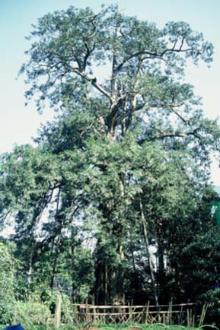
Kaya of Koshoji Temple
It is a female Kaya tree with a height of about 25m and a circumference of about 6.3m at chest height, and is the second largest in Tokyo.
It is said to be the 12th largest in the country.
Published September 30, 1992 Field: Nature
Tokyo designated natural monument
(Designated on January 31, 1963)
Published on September 30, 1992 Field: Early modern times Inagi City designated tangible folk cultural properties (Fudezuka at Myokenji Temple, March 30, 1970, Fudezuka at Anazawa Tenjin Shrine, February 22, 1980, Fudezuka at Myokakuji Temple, 1988) January 23)
![]() No.14 Tools for making Japanese boats (PDF: 881KB)
No.14 Tools for making Japanese boats (PDF: 881KB)
Published October 20, 1993 Field: Folklore
Note: At the time of publication, it was a cultural property designated by Inagi City, but it was changed to a cultural property designated by the Tokyo Metropolitan Government in March 2020.
Tokyo designated tangible folk cultural property (designated name: Ship carpenter's tools from the middle reaches of the Tama River, designated on March 16, 2020)
![]() N0.15 Cultural assets of the former Hoonji Temple (PDF: 959KB)
N0.15 Cultural assets of the former Hoonji Temple (PDF: 959KB)
Published October 20, 1993 Field: Folklore Inagi City designated tangible cultural property (designated March 23, 1989)
![]() No.16 Ashikawa family documents (PDF: 1,391KB)
No.16 Ashikawa family documents (PDF: 1,391KB)
Published October 20, 1993 Field: Early modern times Inagi City designated tangible cultural property (designated August 30, 1988)
![]() No.17 Baba family documents (PDF: 1,491KB)
No.17 Baba family documents (PDF: 1,491KB)
Published October 20, 1993 Field: Early modern times Inagi City designated tangible cultural property (designated August 30, 1988)
![]() No.18 Kanzeon Bodhisattva statue at Koshoji Temple (PDF: 1,088KB)
No.18 Kanzeon Bodhisattva statue at Koshoji Temple (PDF: 1,088KB)
Published on March 20, 1995 Field: Ancient Tokyo designated tangible cultural property (Designated famous wooden Kanzeon Bodhisattva standing statue, designated on January 31, 1963)
![]() No.19 Amida Triad statue at Jorakuji Temple (PDF: 1,038KB)
No.19 Amida Triad statue at Jorakuji Temple (PDF: 1,038KB)
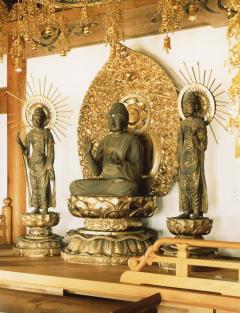
Amida triad statue at Jorakuji Temple
It is one of the oldest Buddhist statues in the city, along with the standing statue of Kanzeon Bodhisattva at Koshoji Temple.
All three statues are made of cypress wood parquet, and although some parts lack beauty in shaping, the shape, body parts, and clothing pattern are all in good shape.
It can be said that it is a Buddhist statue of excellent technique.
Note: Not open to the public.
Published on March 20, 1995 Field: Ancient Tokyo designated tangible cultural property (Designated name: Wooden statue of Amida Nyorai and his flanking attendants, designated on January 31, 1963)
![]() No.20 Seated statue of King Enma at Jorakuji Temple (PDF: 970KB)
No.20 Seated statue of King Enma at Jorakuji Temple (PDF: 970KB)
Published on March 20, 1995 Category: Early modern period Tokyo designated tangible cultural property (designated name: Wooden Seated Statue of King Enma, designated on January 31, 1963)
![]() No.21 Enomoto family documents (PDF: 1,060KB)
No.21 Enomoto family documents (PDF: 1,060KB)
Published on March 20, 1995 Field: Early modern times Inagi City designated tangible cultural property (designated on December 24, 1986)
![]() No.22 Edo no Sato Kagura (PDF: 1,173KB)
No.22 Edo no Sato Kagura (PDF: 1,173KB)
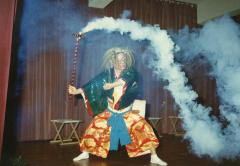
Edo no Sato Kagura in Yamahonsha Naka
It is said that Yamamoto Gon Ritsushi Hironobu founded it in the 6th year of Oan (1373) in the early Muromachi period.
It is a silent play in which masks are worn, and the theme is the world of myths such as the Kojiki and Nihon Shoki.
Published on February 20, 1996 Field: Folklore Nationally designated important intangible folk cultural properties (designated on December 13, 1994)
![]() No.23 Flying sky map of Jorakuji Temple (PDF: 1,136KB)
No.23 Flying sky map of Jorakuji Temple (PDF: 1,136KB)
Flying sky map of Jorakuji Temple
The mirrored ceiling of the outer hall of Amida-do Hall at Jōrakuji Temple was painted by the artist Goryu Aizawa in the late Edo period.
A flying sky map and a dragon map remain. A flying sky map is drawn in the center of the mirrored ceiling.
Note: Not open to the public.
Published on February 20, 1996 Category: Folklore Inagi City designated tangible cultural property (designated name: Jorakuji Temple's Flying Heavens and Dragons
(Designated on October 13, 2020)
![]() No.24 Daimaru Ruins (Part 1) (PDF: 1,174KB)
No.24 Daimaru Ruins (Part 1) (PDF: 1,174KB)
Published October 25, 1996 Field: Middle Ages
![]() No.25 Daimaru Ruins (Part 2) (PDF: 1,754KB)
No.25 Daimaru Ruins (Part 2) (PDF: 1,754KB)
Published October 25, 1996 Field: Antiquity
![]() No.26 Tama Gunpowder Factory (PDF: 1,052KB)
No.26 Tama Gunpowder Factory (PDF: 1,052KB)
Published March 30, 1998 Field: Modern
No.27 Missing number
![]() No.28 Soukoujuku and Kubozenryo (PDF: 992KB)
No.28 Soukoujuku and Kubozenryo (PDF: 992KB)
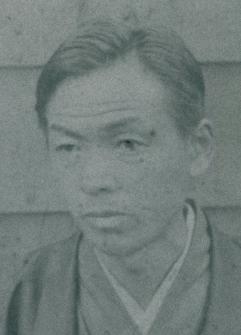
Ryo Kubozen
Kosangjuku is a private school founded by Kubozensuke, a Chinese scholar, at his home in Higashi-Naganuma.
The activities of Jōsujuku, which began in 1880, continued for 30 years until Kubo Zenpei passed away in 1913. Those who enroll are not only from Inagi city area,
We have produced over 800 graduates from the Mitama area, Tokyo, and other prefectures.
Published September 25, 1998 Field: Modern
![]() No.29 Daimaru water supply (PDF: 1,073KB)
No.29 Daimaru water supply (PDF: 1,073KB)
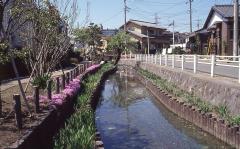
Daimaru water supply
The water is taken from the Tama River in Daimaru and flows to Noborito, Kawasaki City.
Since the Edo period, it has been maintained and managed as an important agricultural water source that irrigates villages in the Inagi City area and downstream villages.
Published September 25, 1998 Field: Early modern times
![]() No.30 Tama River Ferry Pier (PDF: 1,011KB)
No.30 Tama River Ferry Pier (PDF: 1,011KB)
Published September 25, 1998 Field: Early modern times
![]() No.31 Takahashi family documents (PDF: 1,078KB)
No.31 Takahashi family documents (PDF: 1,078KB)
Published October 20, 1999 Field: Early modern times Inagi City designated tangible cultural property (designated March 23, 1986)
![]() No.32 Gravel collection from the Tama River (PDF: 1,083KB)
No.32 Gravel collection from the Tama River (PDF: 1,083KB)
Published October 20, 1999 Field: Modern
![]() No.33 Hirao Jusanzuka (PDF: 1,161KB)
No.33 Hirao Jusanzuka (PDF: 1,161KB)
Published October 20, 1999 Field: Middle Ages
![]() No.34 Hiraodaihara Ruins (PDF: 1,765KB)
No.34 Hiraodaihara Ruins (PDF: 1,765KB)
Published October 20, 1999 Field: Primitive
![]() No.35 Pear cultivation in Inagi (Part 1) (PDF: 1,288KB)
No.35 Pear cultivation in Inagi (Part 1) (PDF: 1,288KB)
Published March 5, 2001 Field: Modern
![]() No.36 Inagi pear making (2) (PDF: 1,184KB)
No.36 Inagi pear making (2) (PDF: 1,184KB)
Published March 5, 2001 Field: Contemporary
![]() No.37 Inagi pear making (3) (PDF: 969KB)
No.37 Inagi pear making (3) (PDF: 969KB)
Published March 5, 2001 Field: Contemporary
![]() No.38 Inagi City Tatedai Ruins (PDF: 1,371KB)
No.38 Inagi City Tatedai Ruins (PDF: 1,371KB)
Published on March 5, 2001 Field: Antiquity
![]() No.39 Ichimura family documents (PDF: 1,132KB)
No.39 Ichimura family documents (PDF: 1,132KB)
Published on March 29, 2002 Field: Early modern times Inagi City designated tangible cultural property (designated on August 30, 1988)
![]() No.40 Seki-ryu Wasan and Yuzo Omata (PDF: 1,107KB)
No.40 Seki-ryu Wasan and Yuzo Omata (PDF: 1,107KB)
Published March 29, 2002 Field: Modern
![]() No.41 Sacred God Event (PDF: 1,563KB)
No.41 Sacred God Event (PDF: 1,563KB)
Published March 29, 2002 Field: Folklore
![]() No.42 Excavated Kawarayato kiln site (PDF: 1,431KB)
No.42 Excavated Kawarayato kiln site (PDF: 1,431KB)
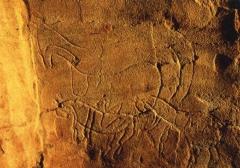
horse line drawing
This is the remains of a kiln that produced tiles and square bricks related to Musashi Kokubunji and Musashi Kokufu during the Nara period.
One had line drawings of three horses that were thought to have been used in rituals.
Published on March 29, 2002 Field: Historic Sites Designated by Ancient Tokyo (Designated in May 2002)
[The artifacts excavated from the Kawarayato kiln site are designated as tangible cultural properties by the Tokyo Metropolitan Government (designated on March 16, 2006)]
![]() No.43 Nambu Railway and Nambu Line (Part 1) (PDF: 1,476KB)
No.43 Nambu Railway and Nambu Line (Part 1) (PDF: 1,476KB)
Published February 10, 2004 Field: Modern
![]() No.44 Nambu Railway and Nambu Line (Part 2) (PDF: 1,452KB)
No.44 Nambu Railway and Nambu Line (Part 2) (PDF: 1,452KB)
Published February 10, 2004 Field: Modern
![]() No.45 Benten Cave (PDF: 1,343KB)
No.45 Benten Cave (PDF: 1,343KB)
Published February 10, 2004 Field: Modern
![]() No.46 Ozawa Castle Ruins (PDF: 1,585KB)
No.46 Ozawa Castle Ruins (PDF: 1,585KB)
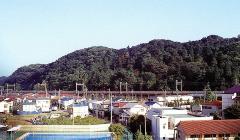
Ozawa Castle Ruins
The ruins of Ozawa Castle remain on the hill south of Anazawa Tenjin Shrine in Yanoguchi.
It is said to be the site of the castle of Ozawa Jiro Shigemasa, the son of Inage Saburo Shigenari, who was a powerful family in the early Kamakura period.
It was built on the border between Yanoguchi, Inagi City, and Suga, Tama Ward, Kawasaki City.
Published February 10, 2004 Field: Middle Ages
![]() No.47 Kawasaki Highway and Hachioji Highway (PDF: 1,492KB)
No.47 Kawasaki Highway and Hachioji Highway (PDF: 1,492KB)
Issued on January 31, 2005 Category: Geography
![]() No.48 Tsurukawa Highway and Oyama Highway (PDF: 1,642KB)
No.48 Tsurukawa Highway and Oyama Highway (PDF: 1,642KB)
Issued on January 31, 2005 Category: Geography
![]() No.49 Origin of the place name "Inagi" (PDF: 1,899KB)
No.49 Origin of the place name "Inagi" (PDF: 1,899KB)
Published on January 31, 2005 Field: Modern
![]() No.50 Inagi Sand Layer (PDF: 1,062KB)
No.50 Inagi Sand Layer (PDF: 1,062KB)
Published on January 31, 2005 Field: Nature
![]() No.51 Tamagawara Bridge (PDF: 944KB)
No.51 Tamagawara Bridge (PDF: 944KB)
Published on February 20, 2006 Field: Modern
![]() No.52 Great Kanto Earthquake and Inagi (PDF: 1,453KB)
No.52 Great Kanto Earthquake and Inagi (PDF: 1,453KB)
Published on February 20, 2006 Field: Modern
![]() No.53 Group evacuation of school children (PDF: 1,393KB)
No.53 Group evacuation of school children (PDF: 1,393KB)
Published on February 20, 2006 Field: Modern
![]() No.54 Paleolithic period in Inagi (PDF: 1,284KB)
No.54 Paleolithic period in Inagi (PDF: 1,284KB)
Issued on February 20, 2006 Category: Primitive
![]() No.55 Komazawa Gakuen school grounds ruins (PDF: 1,375KB)
No.55 Komazawa Gakuen school grounds ruins (PDF: 1,375KB)
Published March 15, 2007 Field: Primitive
![]() No.56 Inagi side cave grave (PDF: 1,290KB)
No.56 Inagi side cave grave (PDF: 1,290KB)
Published March 15, 2007 Field: Antiquity
![]() No.57 Sericulture and life (PDF: 1,329KB)
No.57 Sericulture and life (PDF: 1,329KB)
Issued on March 15, 2007 Category: Folklore
Issued on March 15, 2007 Category: Folklore
![]() No.59 Terakoya and education in the Edo period (PDF: 1,703KB)
No.59 Terakoya and education in the Edo period (PDF: 1,703KB)
Published on March 5, 2008 Field: Early modern times
![]() No.60 The Beginning of Elementary School Education (PDF: 1,638KB)
No.60 The Beginning of Elementary School Education (PDF: 1,638KB)
Issued on March 5, 2008 Category: Modern
To open PDF files, you need Adobe Acrobat Reader DC (formerly Adobe Reader).
If you don't have it, you can download it for free from Adobe.
![]() Download Adobe Acrobat Reader DC
Download Adobe Acrobat Reader DC
Inquiries regarding this page
Inagi City Education Department Lifelong Learning Division
2111 Higashi-Naganuma, Inagi-shi, Tokyo
Phone: 042-377-2121 Fax: 042-379-0491







